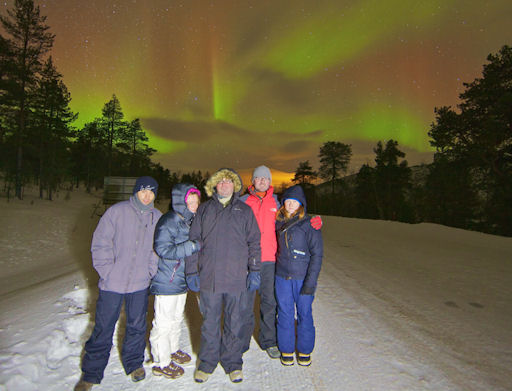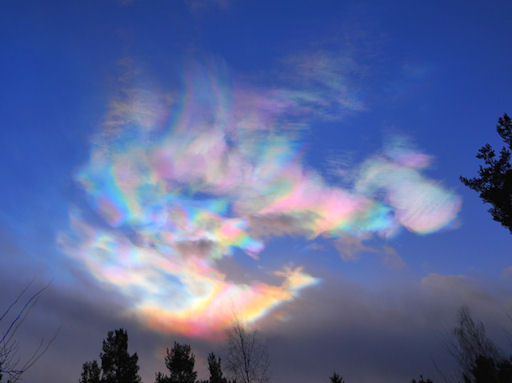Don't just watch shooting stars. Wear them! Authentic meteorite jewelry for Christmas is now available in the SpaceWeather Store. | | |
SOLAR FLARE: Emerging over the sun's southeastern limb, sunspot AR1389 unleashed an M2-class solar flare at 1350 UT on Dec. 29th. The blast shows that the newly-visible sunspot is capable of significant eruptions. AR1389 is not yet facing Earth, but it is turning in our direction.
CHANCE OF MAGNETIC STORMS: NOAA forecasters have downgraded the chances of a geomagnetic storm on Dec. 29th to 20%. A CME is still expected to arrrive later today, but the longer it takes to get here, the weaker its impact is likely to be. Storm alerts: text, voice.
"With a CME expected to collide with the Earth's magnetic field any minute now, we were treated to a wonderful display of aurora in Ivalo, Finland, last night," reports tour guide and nature photographer Andy Keen. "We drove north to escape the overcast and eventually found a hole in the cloud cover. To our delight moments after parking up the vehicle auroras appeared right above our heads." (continued below)

"As you may imagine the whole group was really excited as none of them had witnessed it before," adds Keen. "In fact, 5 of them had travelled from Australia, 1 from Israel and 1 from Hong Kong so it was lovely to see their dream being fulfilled."
MOTHER OF PEARL: As December draws to a close, the first polar stratospheric clouds (PSCs) of northern winter are forming around the Arctic Circle. Anders Gjørwad Hagen of Vinstra, Norway, photographed this specimen on Dec. 27th:

Also known as "nacreous" or "mother of pearl" clouds, icy PSCs form in the lower stratosphere when temperatures drop to around minus 85ºC. Sunlight shining through tiny ice particles ~10µm across produce the characteristic bright iridescent colors by diffraction and interference.
The display Hagen witnessed formed in the wake of "Dagmar," a storm that "hit the coast of Norway with hurricane strength on Dec. 25th and 26th," says Hagen. "Record breaking winds up to 145 mph were recorded. While people on the coast dealt with the aftermath, photo enthusiasts inland saw the effects of high altitude winds in these colorful clouds. It was a beautiful display, but not comfortable to think of all the suffering lying behind it."
more images: from Bjarki Mikkelsen of Jokkmokk Lapland, Sweden; from P-M Hedén of Tänndalen, Sweden; from Krystian Rosa of Brandbu, Norway; from Patricia Cowern of Porjus,Sweden
Potentially Hazardous Asteroids (
PHAs) are space rocks larger than approximately 100m that can come closer to Earth than 0.05 AU. None of the known PHAs is on a collision course with our planet, although astronomers are finding
new ones all the time.
On December 29, 2011 there were 1272 potentially hazardous asteroids.
Notes: LD means "Lunar Distance." 1 LD = 384,401 km, the distance between Earth and the Moon. 1 LD also equals 0.00256 AU. MAG is the visual magnitude of the asteroid on the date of closest approach. | | The official U.S. government space weather bureau |
| | The first place to look for information about sundogs, pillars, rainbows and related phenomena. |
| | Researchers call it a "Hubble for the sun." SDO is the most advanced solar observatory ever. |
| | 3D views of the sun from NASA's Solar and Terrestrial Relations Observatory |
| | Realtime and archival images of the Sun from SOHO. |
| | from the NOAA Space Environment Center |
| | the underlying science of space weather |

